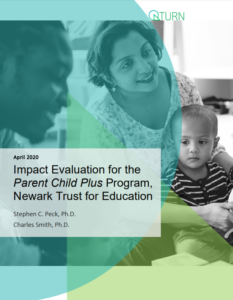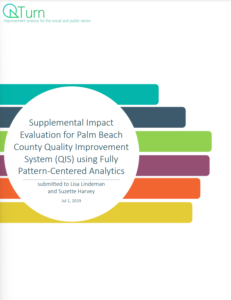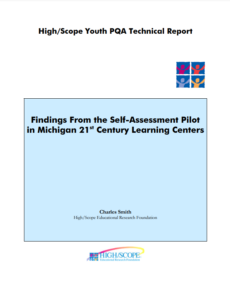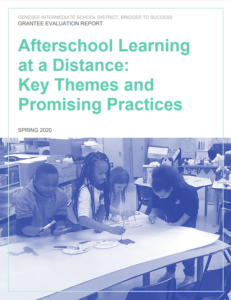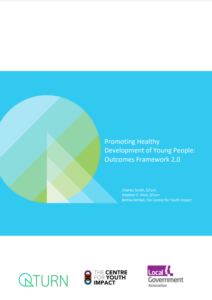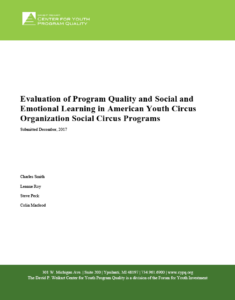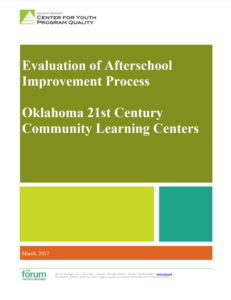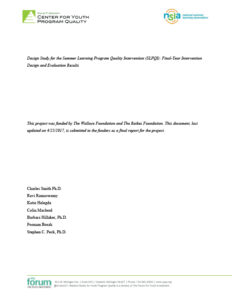The Quality-Impact-Equity Design and Methods (QDM) Toolbox was used to: (a) reconfigure existing measures for Parenting Practice Quality and Child SEL Skill to maximize reliability and validity for measuring socio-emotional skills and learning (SEL); (b) produce holistic profiles of parent and child skill at each timepoint; and (c) apply pattern-centered analytics to estimate impact and equity effects of the PC+
program as implemented in Newark.
Impact Evaluation for the Palm Beach County Quality Improvement System
We sought to answer two specific questions about implementation and children’s SEL skill growth: What is the impact of QIS exposure on program quality (i.e., best practices, low staff turnover, great content), particularly for programs that have lower program quality at baseline? What is the impact of exposure to high program quality on student SEL skills?
Youth Program Quality Self-Assessment Pilot Study
Overall 24 sites within 17 grantees participated in the self-assessment pilot study by assembling staff teams to collect data and score the Youth Program Quality Assessment (PQA). Youth PQA data collected using the self-assessment method demonstrated promising patterns of both internal consistency and concurrent validity with aligned youth survey responses.
Afterschool Learning at a Distance: Key Themes and Promising Practices
This report describes the experiences and practices of Genesee Intermediate School District: Bridges to Success (GISD) Team Leads and direct staff serving children and families after substantially redesigning afterschool programming due to the COVID-19 crisis.
Promoting Healthy Development of Young People: Outcomes Framework 2.0
In the summer of 2018, the Local Government Association (LGA) in England commissioned the Centre for Youth Impact to produce an outcomes framework to help partners across the English youth sector to develop and agree on mutual aims to support young people in their local areas. The work was in response to LGA’s consultations that led to its vision statement described in the report, Bright Futures: Our Vision for Youth Services, published at the end of 2017.
Measure Once, Cut Twice: Using Data For Continuous and Impact Evaluation in Education Programs
This paper describes a generic quality-outcomes design (Q-O design) that meets the need for performance measurement methodology for concurrent and integrated impact evaluation and continuous improvement in the same organization; that is, measure once, cut twice.
Quality-Outcomes Study for Seattle Public Schools Summer Programs
This quality-outcomes study was designed to both (a) describe performance in Seattle Public Schools (SPS) summer learning programs in ways that are useful to staff and (b) provide evaluative evidence (i.e., validity) for an instructional model that includes challenging academic content and responsive instructional practices.
Evaluation of Program Quality and Social and Emotional Learning in… Social Circus Programs
This report exemplifies use of the suite of SEL measures and benchmarks in the American Youth Circus Organizations network.
Evaluation of Afterschool Improvement Process: Oklahoma 21st Century Community Learning Centers
This paper describes validity of QIS performance measures and longitudinal change over four years in Oklahoma 21st CCLC programs.
Design Study for the Summer Learning Program Quality Intervention (SLPQI)
This paper describes implementation and outcomes for QIS in school-based summer learning programs in multiple cities.
